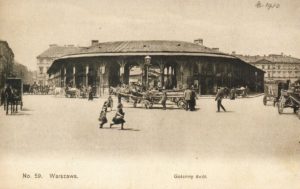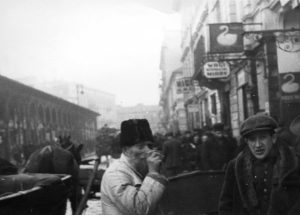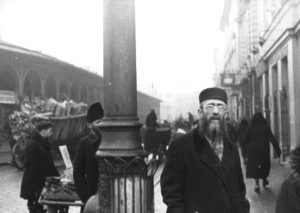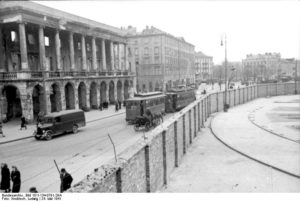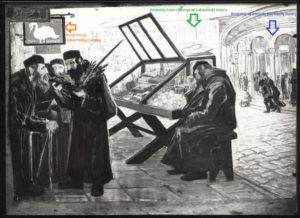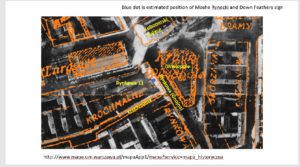In 1929 my great-grandfather, Moshe Rynecki (1881-1943), painted this painting in Warsaw, Poland. I know this because the painting (it’s untitled, but contains the image of the goose with the words, Pierze Puch, which means Down Feathers, thus the blog post title) is dated in the lower left hand corner along with the Polish spelling of the city: Warszawa. My family once had possession of this painting, but no longer knows its whereabouts.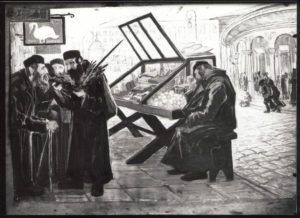
If you’re not entirely familiar with my family’s story, here’s the brief synopsis:
My great-grandfather was a prolific Warsaw based artist who painted scenes of the Polish Jewish community in the interwar years. In the early days of the Second World War he became concerned about his body of work and made the decision to divide his paintings, sketches, and notebooks into bundles, which he then hid with friends and acquaintances in and around the city of Warsaw. He then went into the Warsaw Ghetto and was eventually deported to Majdanek, the Nazi concentration and extermination camp, where he perished. My Dad (who was not quite 3 when the war started) and his parents survived the war on false papers. After the war, (please read Chasing Portraits to learn the longer story), Moshe’s widow recovered a small percentage of the hidden paintings. Trying to leave behind the destruction and horrible memories of the war, Dad and his parents moved to Italy. In Rome, they made photographs of a number of surviving paintings. This was one of the photographs that they made. Unfortunately, while we have this photo, my family no longer has the painting, and I don’t know who has it.
In 2008 I began work on a documentary film (currently in post-production) about my quest for my great-grandfather’s lost paintings, and produced a 9-minute “proof of concept” trailer. The trailer contains this photograph. This is important to explain because it’s not online elsewhere and I was recently contacted by Elly (Eliezer) Trepman (he’s researching information about the street where his father grew up), who spotted the image in the trailer and thought it was along the street he’s researching.
The painting seems to be slightly north of the Rynkowa-Krochmalna intersection. The building on the left, next to the men with the lulav (the closed frond of the date palm tree used during the Jewish holiday of Sukkot), is probably Rynkowa 11. The round building on the right with the arches, across the street, is probably the market building Wielopole (Gościnny Dwór).
Additionally, while the goose down icon (Pierze Puch) was probably fairly common in Poland, there were, in fact, two such signs on Rynkowa Street; a square one at Rynkowa 11 and a round one just two houses south, at Rynkowa 7. While these photographs from Yad Vashem’s digital collection were taken from the other side of the goose sign, facing south, they are along the same street.
Furthermore, it appears that the Rynecki painting also includes the front columns of Lubomirski Palace.
To help point out these features in the Rynecki painting, I’ve marked up this image (click on the photograph to enlarge it).
An aerial image with the various components discussed above, labeled here for purposes of better understanding the street geography.
I am, once again, reminded that I never know how, or when, or in what manner I will receive new clues about my great-grandfather’s life and body of work. My project is titled Chasing Portraits for many reasons, but one of the themes that seems to intrigue people the most is the idea of chasing down details and fragments of general history and of history specific to my family. I am grateful to all who provide clues and details that allow me to better understand my great-grandfather and his art. Thank you for being part of the journey.
